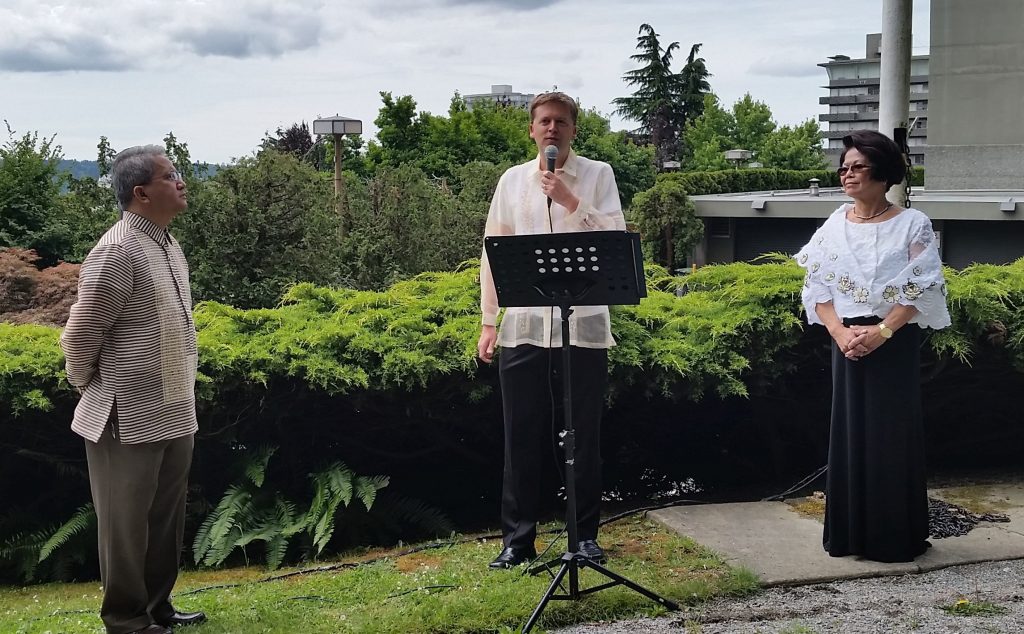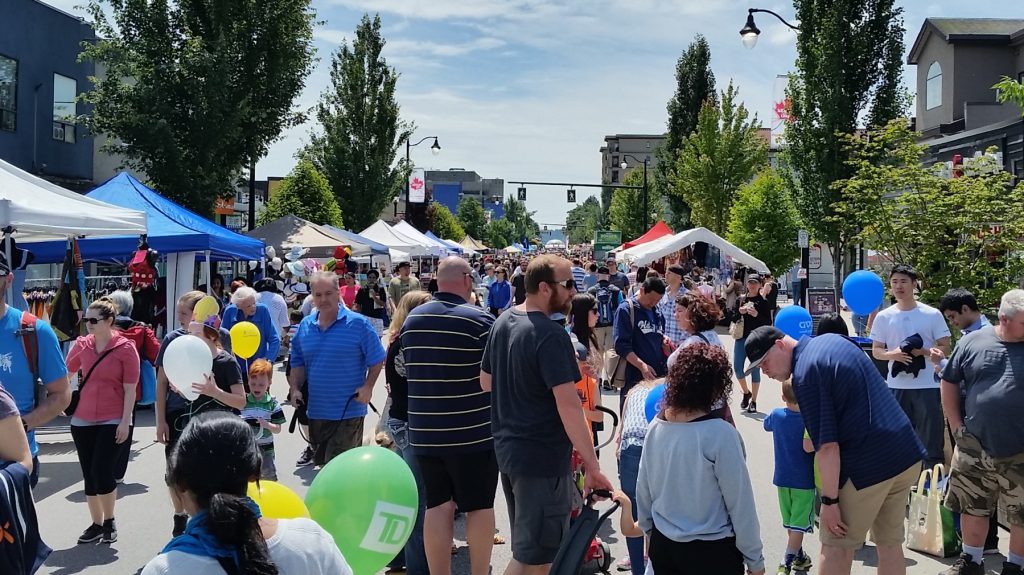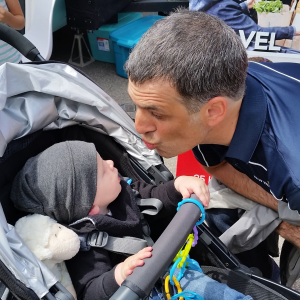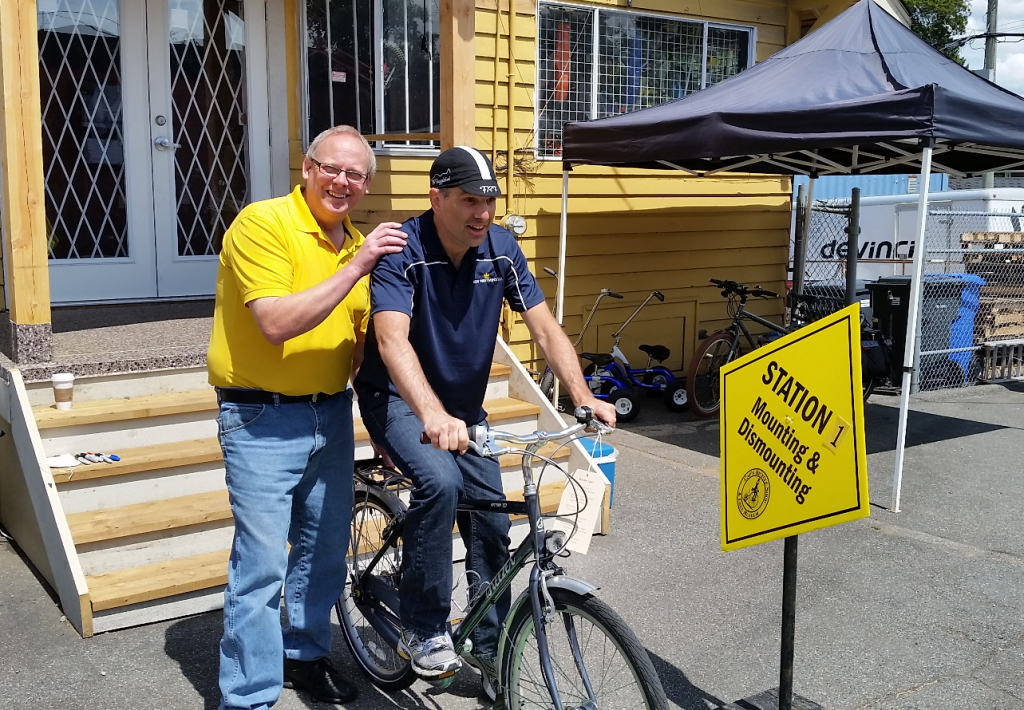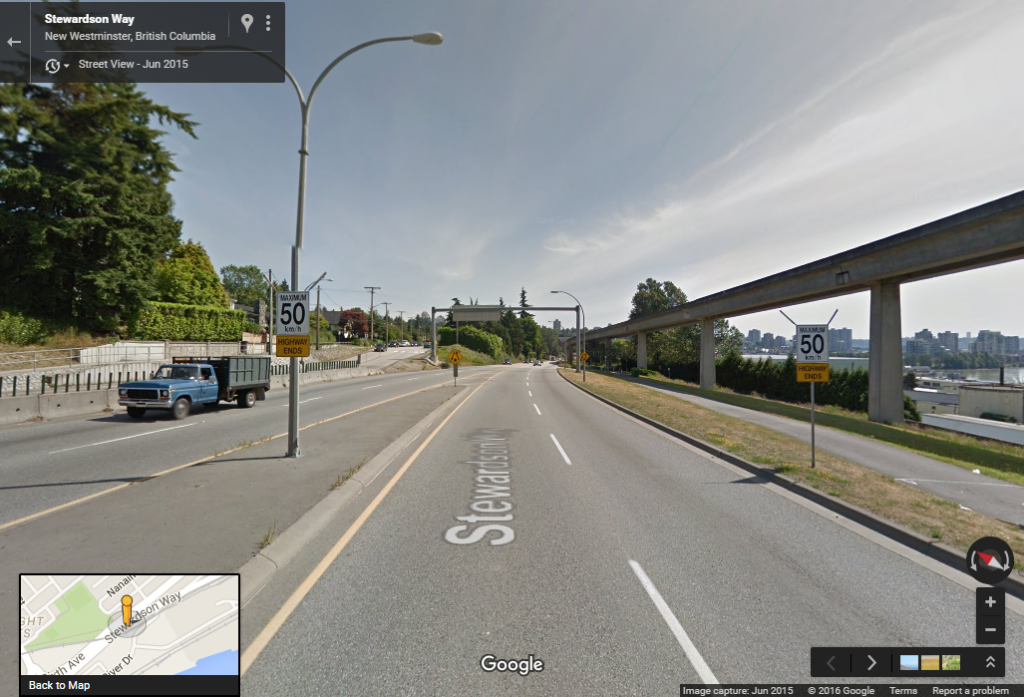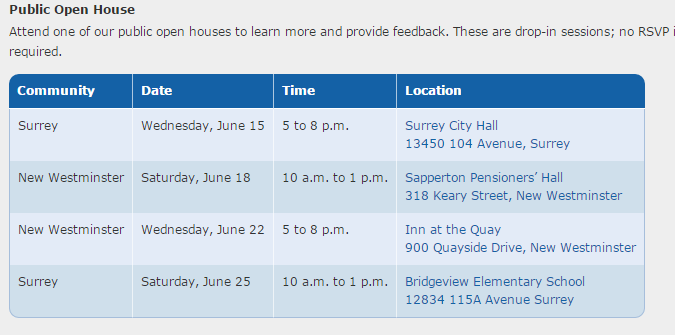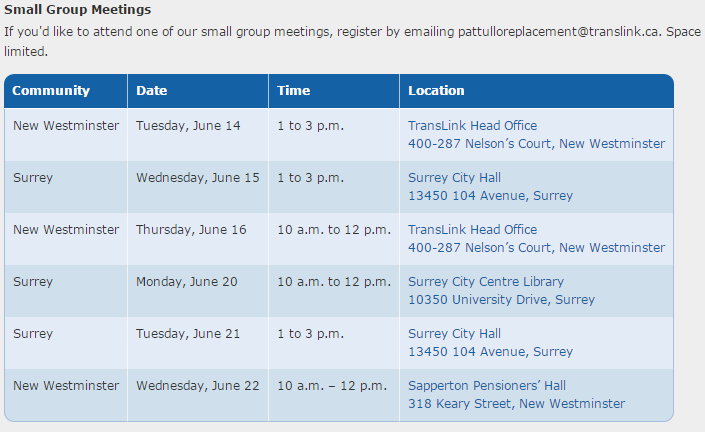Sorry I am so late getting this update done. I’m busy as ever with many evening events, and long hours contemplating how a leader who proposes a completely unnecessary and divisive referendum, then fails to win that referendum creating uncertainty and chaos, immediately resigns because of that failure, relates to BC politics… but I digress.
Our June 20th Council day included a Workshop during the day where we discussed the branding of our Waterfront Vision, some long-term Capital Asset Management and had a pretty cool report outlining some visions for the “Public Realm” of Downtown New West – all topics that will no doubt be subject of future discussions here and in the community. We also had a pretty happening Agenda.
We also had a presentation of the 2015 Annual Report, which is a report on what the City did over the last year. You can read it all here.
The following Items were Moved on Consent:
228 Nelson’s Crescent: Housing Agreement Bylaw for Three Readings
This is the Housing Agreement that secures Market Rental use for the portion of 228 Nelson’s Crescent – the second residential tower at the Brewery District. This formally sets the terms that forces Wesgroup to only operate those suites as rental into the future.
This is a good thing for Sapperton, where the rental market is very limited. It isn’t subsidized housing, so the rentals will be “full market price”, but there is a good mix of more family-friendly 2+ and 3-bedroom apartment sizes, which should add another housing option adjacent to SkyTrain and the rapidly expanding RCH.
Consideration of Development Permit DPS00034 for Proposed GVRD Pump Station & Brunette Fraser Greenway Extension
This project has been a while coming, and Metro Vancouver was doing public consultation on park options at last year’s Riverfest in September. The new pump station that Metro is building at the end of the Brunette River will coincide with an extension of the Sapperton Landing Park and massive improvements for the public space at the mouth of the Brunette. As part of the City’s bigger Waterfront Vision to connect Pier Park and the Quay to the Central Valley Greenway along the Brunette River, this will be an important link and an important rest stop, as public bathrooms will be included in the park design. Kudos to MetroVancouver for having the foresight, I look forward to the City taking credit for this great amenity!
900 Carnarvon Street – Amendment to Development Agreement Bylaw No. 7855, 2016
The work to get the last building in the Plaza88 development out of the ground is continuing. One of the things a City and a Developer have to do is agree on interface issues like sewer hookups and sidewalks and other boring details. In this case, we need to amend the Development Agreement Bylaw that sets out those conditions because of an adjustment in the location of the sound wall on the south side of the building.
Proposal for Temporary Street Closure and Public Realm Improvements on Sixth Street and Belmont Street
Lighter, Quicker, Cheaper, see if it works. If you have ever heard the current rock star of City Planning, Janette Sadik-Kahn, speak about how she worked in the Bloomberg administration to re-write how the streets of New York City work, you will recognize where New West is going here.
In her (great! Really, you should read it!) book Steetfight, Sadik-Kahn talks about how simple interventions in the public realm can make a big difference in how a street works, and improve how your City works. Her way of getting past the natural, and often boisterous, opposition to any kind of change is to pilot an idea in a temporary way – use paint and removable fixtures to see how the space works for a little while without committing huge time and cost to the project. If the pilot fails, it is cheap to remove, and no-one is worse off, if the pilot works, you can invest in making the pilot permanent. Instead of spending time and energy on a public consultation that is made up of drawings and people complaining about an intangible, you spend that public consultation money on a temporary installation, so people get to see how an idea works. Public opposition to change often become a public embrace of a new idea.
In New West, we have seen a few ideas like this creeping in. The Parklet installed in Sapperton last year (a few complaints, but far outnumbered by positive feedback!), the sand courts at Pier Park (who wants a beach with no water!? – apparently lots of people!), and now a partial closure of Belmont Street to make an expanded public seating area.
We are doing it cheaply and quickly, but the Farmers Market over the winter was a demonstration that road closures along Belmont are possible, so I have a good feeling. People’s inclination to oppose “loitering” will push up against people’s desire to have common spaces. It will be interesting to see how this installation works.
234 Second Street: Demolition Application for a Pre-1900 House
Yes, Council approved the demolition of a pre-1900 house in Queens Park the week after we passed a “moratorium” on demolitions of heritage homes in Queens Park.
To clarify, despite what the media may report, there is no “moratorium” on demolitions. Council passed a Bylaw that puts special protection on pre-1966 homes in Queens Park Study Area for a period of one year. Anyone with a 50-year-old or older house who wishes to demolish or significantly alter that house will need to go through a special permitting process, and demolitions will have to come through Council. Council has the authority, under this temporary Bylaw, to deny that demolition permit in order to preserve heritage values of the community.
In this case, the owner of the house and their architect made a case that the heritage value of the house is low, as it is of significant age, but has little character of historic significance. The building itself is in such a condition that repairs that would restore the heritage value are economically unfeasible.
Council moved to approve the demo permit, but I would not expect this to become a trend.
The following Items were removed from consent for discussion:
2016 City Partnership Grant – Rivershed Society of British Columbia
2016 Community Grant Application – Royal City Curling Club
These were two “outside of the cycle” Community Grant requests that came to Council, both supported by Council. I voted for one, and against the other, which I leaves me trying to explain why my decisions were not arbitrary.
The Rivershed Society of BC asked for $5,000 to support their AGM and a one-day event at the Fraser River Discovery Centre (I voted against). The Royal City Curling Club asked for ~14,000 to support bringing the week-long BC Junior Curling Championships to New Westminster in December (I voted for the recommendation for a smaller grant amount of $4,000).
These are two groups I support! I curl at the RCCC, though I am not a member of the Board, nor am I in any way involved in the organization of the Juniors. I also support the work of the RSBC, and even gave a talk at one of their events not too long ago, along with generally being a supporter of the work Fin Donnelly has done to call attention to the importance of the ecology of the Fraser River. So If I have a bias here, it is for both organizations.
The RCCC was not able to apply during the regular cycle of Community Grants. The process CurlBC uses to determine hosts for provincial events doesn’t happen until the Spring, and as the Juniors is the first provincial event, it is held in the last week of December instead of early in the new year like seniors, mens’ and womens’ provincials. Our grant application and award cycle doesn’t work. for Juniors – although it notably would work for any other Provincial competition CurlBC. Otherwise, the Grant meets the criteria, is in line with what we offer similar organizations doing similar stuff (although, notably, more often through the Amateur Sports Grant), and there was a recommended award by the committee that oversees grant awards.
The RSBC did not indicate they were unable to apply during the regular granting period. Nothing about their request was extraordinary except they apparently chose to make it in June instead of in November when the applications were due. They should have anticipated the need, and made the request at the same time as the many organizations that *did* meet the deadline. Their annual event is at the same time as last year, when this Council extraordinarily granted them a similar amount as a one-time thing outside of the regular process. Once is an anomaly, totally understandable. Twice is a trend, though, and I cannot support continuing to support that trend. I don’t think it is fair to the other organizations that got their stuff in on time.
We then, having hit the designated hour, moved onto our scheduled Public Hearings on two topics:
Mobile Food Vending Bylaw No. 7850, 2016
Staff have been working on a Bylaw to allow Food Trucks to operate within the City, outside of festival events. It is (typical of government) more complicated than just saying “yes”, as there are business licenses, health authority regulations, insurance and liability concerns, and of course, public consultation – especially with the business community.
On the positive side, I think food trucks are great addition to the street scene. They can activate commercial areas, adding to foot traffic for adjacent businesses and make our street more “sticky”. There is a philosophy in Urbanism, from Jane Jacobs to Charles Montgomery, that more people on a street makes a street work better, because it adds to the social character of a City, and therefore feeds the economic character of the City. You can double the number of people on a street by attracting twice as many people, or by making everyone already there spent twice as much time on the street. Food Trucks can contribute to both of these.
On the less positive side, I’m not sure how much uptake we are going to get from food truck operators. The industry is tough, with razor-thin margins. Every jurisdiction (including ours) has its own regulatory hurdles, and operators have to decide which it is worth their time to invest. The lack of off-truck support like commissary kitchens (which, if you are selling food to the public, can’t just be the stove in your basement suite) out here in the ‘burbs adds one more cost and hassle.
I’m happy to open the door and remain optimistic, but let’s see who decides to come in.
HRA Bylaw No. 7854, 2016 and Heritage Designation Bylaw No. 7853, 2016 for 1031 Sixth Avenue
The ongoing saga of the 1891 McLaughlin House finally came to Public Hearing.
The (shorter) history of this project is that the house was slated for demolition several months ago, and staff brought that information to Council, recognizing that Council had previously highlighted a desire to preserve and protect pre-1900 homes wherever possible. At the time of the demolition permit application, this house had no legal protection. The City had no legal ability to prevent the house from being demolished. Our only hope was to work with the homeowner and provide him incentives to protect the house.
Through months of work by staff, by the applicant, and by the architect hired by the applicant, a plan was developed that would provide long-term protection to a restored McLaughlin House, yet allow the homeowner to build a home on his property that fulfilled his family’s needs. It wasn’t a perfect plan, but it was a negotiated compromise between the City and the landowner.
It was clear form the correspondence we received (7 letters, all opposed), and from the presentations at the Public Hearing (more than a dozen presentations, only the representative of the homeowner in support), that the neighbourhood did not support this innovative approach of significantly increasing the density on the lot.
Public Hearing over, we went back to our Regular Agenda, which started with us addressing the Bylaws we just covered in the Public Hearing.
Heritage Designation (1031 Sixth Avenue) Bylaw No. 7853, 2016
Heritage Revitalization Agreement (1031 Sixth Avenue) Bylaw No. 7854, 2016
As discussed above, Council moved to reject the Application and the Heritage Conservation Plan that was presented. We did this recognizing that demolition of the 125-year-old home is likely. The inability to reach a preservation plan that the community could support is disappointing. No doubt many in the community are going to be disappointed by the inability of a City Council to prevent the demolition of a privately owned house on private property, but we are regulated by the Local Government Act, and homeowners have rights, including the right to knock their house down and replace it with a home that meets the zoning of the property.
It is possible that a preservation plan will come together, however, the homeowner has already spent a considerable amount of time and money to get to this point, only to have his work rejected. Everyone has their limits.
Mobile Food Vending Bylaw No. 7850, 2016
As discussed above, Council moved to give the Bylaw that would permit food trucks to operate in the City on a regular basis third reading. Warm up your artisanal kale-and-cheese waffle wagon.
We then had an Opportunity to be Heard:
Temporary Use Permit No. 00013 for 401 and 451 Salter Street
A movie Studio wants to use one of the big old industrial buildings in Queensborough near the Derwent Bridge to film some TV and Movie magic. This does not strictly meet the designated landuse in the zoning for the property, so short of doing a complete rezoning. No-one corresponded on the issue, and no-one came to speak to Council for or against the idea.
And one final regular agenda item:
Potential of Obtaining a Liquor License to Sell Beer and Wine at the
Westminster Pier Park Concession Eats at the Pier
We asked for a report on the legislative outlook at being able to sell beer of wine at the Pier Park concession on a regular basis. The short version is that there is not liquor license model that works for the location. As the “restaurant” does not have inside seating, it does not fit the regular license criteria. It is possible to do “special event licenses” for one-off events like last summer’s Pecha Kucha in the Park with all the regular beer garden accoutrement (security, cordoned off area, identification protocols, etc.), but that can’t be a day-to day thing.
We need to change the Provincial Liquor laws. We still have this strange puritan idea that alcohol must be separated from public space, the last vestiges of temperance laws from a century ago. So far. this provincial government has been long on promise, short on delivery of moving us into the 21st century.
We then moved onto the evening’s Bylaws for consideration:
Housing Agreement (228 Nelson’s Crescent) Bylaw No. 7838, 2016
As discussed above, this Bylaw formalizing the requirement for market rentals at the second Brewery District tower received three readings.
REGARDING Development Agreement (900 Carnarvon) Bylaw No. 7855, 2016
As discussed above, in order to fix the language in the Development Agreement Bylaw, we first RESCINDED the Third reading given to the Bylaw on May 30, 2016, Then gave Revised Bylaw No. 7855, 2016 Third reading.
HRA (313 Queens’s Avenue) Bylaw No. 7834, 2016
Heritage Designation (313 Queens’s Avenue) Bylaw No. 7835,2016
As discussed last meeting this Bylaw to allow renovation of the Heritage House on Queens Ave in exchange for permanent protection by a Heritage Designation was adopted. It is now the Law of the Land, please adjust your behavior accordingly.
Zoning Amendment (900 Carnarvon Street) Bylaw No. 7764,2015
As discussed last meeting, this Bylaw amending the zoning for the 4th tower at Palza88 is adopted. It is now the Law of the Land, please adjust your behavior accordingly.
Five Year Financial Plan (2015-2019) Amendment Bylaw No.7849, 2016
As discussed last meeting, this Bylaw amending our Budget is adopted. It is now the Law of the Land, please adjust your behavior accordingly.
We then talked about Correspondence from the Postal Workers, asking that we continue to support home delivery of mail in Canada, which this Council does.
And we were done until July 4th.

